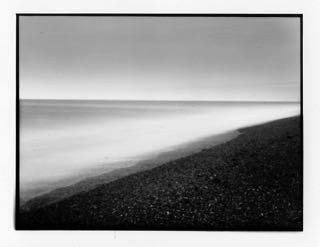Michael D Hawley grew up in photography. His father lugged cameras, and eventually, so did he. It’s an introduction to the art that I’m sure many of us share – I know I do. I still have my very first photograph sitting around here somewhere – it’s a portrait of my parents and their best friend, all of them laughing and hunched down, because I kept pointing the K1000 further and further down as my 6 year old fingers fussed with the focus ring.
It’s a bond that’s formed with this art form – whether you pursue something else in life or stick with photography professionally – the smell of an old camera still brings back a lot of warm memories. Michael stuck with photography, and made it his career. He lives in Vancouver, BC and works as an independent cinematographer, photographer, and camera operator. I think you’ll see that professional discipline in the work displayed below.
After taking in the interview below, be sure to check out Michael’s website (http://www.mdhphoto.net/), filled with both lensed and lensless images, plus some great motion picture work.
Your bio mentions that you grew up in a family that often had cameras around, and your father lugging the heavy home video equipment of the day for the family goings on. Eventually your mom swapped your pellet gun for a camera. If you had to pinpoint the value you got from this early photographic experience, what do you think it would be?
Yes my Father’s love for capturing experiences was very much my introduction to cameras. He was never very interested in the art of photography but an avid documenter, both with stills and video so the camera was always around. Like many people I was fascinated as a child at magic of freezing time. I use to spend hours scanning over any old black and white image I could find, wondering who the people where in the photographs and what their lives must of been like; It was a time machine for me. When I look back there were a few moments that really turned my interest toward photography. The first was in high school I was never very good at writing so I convinced my teachers to let my friends and me produce short videos on the topic instead of writing essays. With in-camera and deck to deck editing really it was much more work then writing but we had a lot of fun; our classmates loved the videos and hey we got a good mark. The second influential time for me was when I was a teenager and my mom sent me away in the summers to work on my uncles farms. One of the ranches was in a very remote part of British Columbia’s interior called Falkland. It was a very beautiful cattle farm that lay in the bottom of a valley. There was no one around, the town only had about 500 residents and out of shear boredom I picked up my aunt’s video camera and started shooting the farm and surroundings, this was when I really began to observe light and composition even though I probably would not of been able to communicate it at the time. The next and I would say most important time of my development was when I first introduced to a Twin Lens Rolleiflex this of course was when digital had already essentially taken over. I could not believe the look of the images and how beautiful medium format film is. What followed was pivotal to my development was learning how to meter light and really understand exposure. Also shooting medium format restricted me to twelve exposures and really forced me to ask myself why I was taking this image, what did I like about it.
In the Desert
[singlepic id=387 w=600]In the Desert, ©Michael D Hawley 2016[/singlepic]
It’s not often that we see a professional photographer devoting so much of their portfolio and online presence to pinhole. What is it that draws you to pinhole?
After the Rolleiflex I became a camera junkie and with digital taking over I found many cheap sales on incredible second hand film cameras some really wonderfully crafted tools. Which took me all the way to the earliest and most primitive camera the pinhole camera. I instantly fell in love with pinhole it was so raw and basic. To me when the elements all come together the images just feel so surreal, like stepping into a dream. Because pinhole is so simple of a camera with a fixed aperture and self controlled shutter, no focusing, no choice of lenses you can really just think about placement. I have always felt that getting a really good wide angle shot is much more difficult to achieve because you have many more three dimensional elements to consider in composition but can be much more rewarding for the viewer. Since pinhole is super wide angle when you bring your eyes right up to the camera essentially what you see is what you get and with its long exposures I love how the pinhole camera captures motion, like paint strokes on a canvas.
A Perfect Night
[singlepic id=385 w=600]A Perfect Night, ©Michael D Hawley 2016[/singlepic]
Floating
[singlepic id=386 w=600]Floating, ©Michael D Hawley 2016[/singlepic]
How did you discover pinhole photography?
I discovered pinhole photography while visiting my local camera shop Beau Photo in Vancouver. Beau sold Holga pinhole cameras and I thought it would be fun to play around with one and a camera for $50 did not seem like much risk. I love the Holga 120PC the camera is awesome it gave me some of my favourite pinhole shots. I really like the F192 aperture on it allowing for some long exposures. I also picked up the Holga 120WPC panoramic camera and had great success with it. I often found that Holga cameras would either give me my best shots or ruin them with light leaks, backs falling off, forgetting to take the lens cap off etc. so I wanted to find a camera I knew was not going cause quite so many problems. Which lead me to the Zero Image 612F multi format camera. The Zero Image is a handmade camera and it’s polished teak wood finish and brass controls are almost as beautiful as the photographs it takes.
Time Travel
[singlepic id=396 w=600]Time Travel, ©Michael D Hawley 2016[/singlepic]
New Day
[singlepic id=392 w=600]New Day, ©Michael D Hawley 2016[/singlepic]
Do you feel that pinhole improves your professional photography? How so?
Yes I do feel pinhole has improved my professional work. It has really taught me how important camera placement is and further to that it has taught me a great deal about what makes for an interesting wide angle shot. Pinhole has also showed me the benefits to keeping things simple and exploring new mediums. I often wish the professional world would be more open to taking creative risks and trusting an older, slower process.
Kilmainham Jail
[singlepic id=390 w=600]Kilmainham Jail, ©Michael D Hawley 2016[/singlepic]
Siwash Rock
[singlepic id=395 w=400]Siwash Rock, ©Michael D Hawley 2016[/singlepic]
One of the hardest aspects of pinhole photography is the visualization before the shot. The “seeing”, as it were. How do you approach your shot visualization?
I try to approach locations and scenes that will utilize the camera’s strengths which I feel are it’s long exposures and super wide perspective. I will look for things that are in motion and will give the viewer as sense of movement, like clouds, trees or water. I will also look for locations that will create a good sense of depth and height. I always move the camera in a little closer to the scene then what would appear natural to the eye. Pinhole is always a bit of guess work and with time the guessing becomes less.
Saturna East Point Pinhole
[singlepic id=394 w=600]Saturna East Point Pinhole, ©Michael D Hawley 2016[/singlepic]
What do you find to be the biggest challenge with pinhole photography? What stops you?
I do not find many challenges with shooting pinhole photography as the camera is very simple. However since the pinhole camera has many limitations in its simplicity it is not the best tool for many projects. The biggest challenge for me with pinhole is in the printing. The camera vignettes heavily and more so with panoramic, the exposure varies greatly from the center to the edges and I find it is very hard to strike that balance when it comes to the print. However when everything comes together the prints to me are stunning and feel so unique. Another challenge with pinhole and which I think might be its greatest is trying to get people to look at the camera as a legitimate camera and art form, I find it is often dismissed too easily.
Late Light
[singlepic id=391 w=600]Late Light, ©Michael D Hawley 2016[/singlepic]
Palace Window
[singlepic id=393 w=600]Palace Window, ©Michael D Hawley 2016[/singlepic]
You’ve photographed some notable actors – Gary Oldman, Pierce Brosnan – how soon till we see you attempting this with a pinhole? 🙂
I have been fortunate to photograph some very talented people and even though I really love pinhole photography I don’t think I would use it much for portraiture. Pinhole with its wide perspective and warped edges is not very forgiving on the face. Perhaps if the scene called for a dramatic surreal effect, or perhaps I would maybe mix some elements in the post work. There is a pinhole photographer I follow on Flickr Scott Speck who has shot some interesting portraits with pinhole, I enjoy seeing his work.
There are so many talented pinhole photographers out there and I am always excited to see what they come up with next, always an inspiration to me!
In the Morning
[singlepic id=388 w=600]In the Morning, ©Michael D Hawley 2016[/singlepic]
Kilauea Volcano
[singlepic id=389 w=600]Kilauea Volcano, ©Michael D Hawley 2016[/singlepic]









